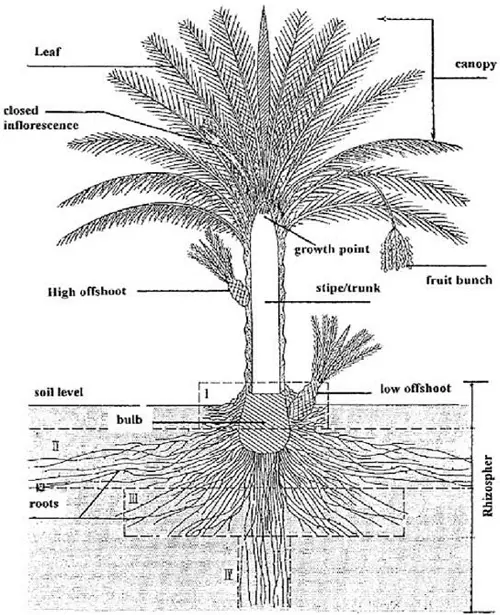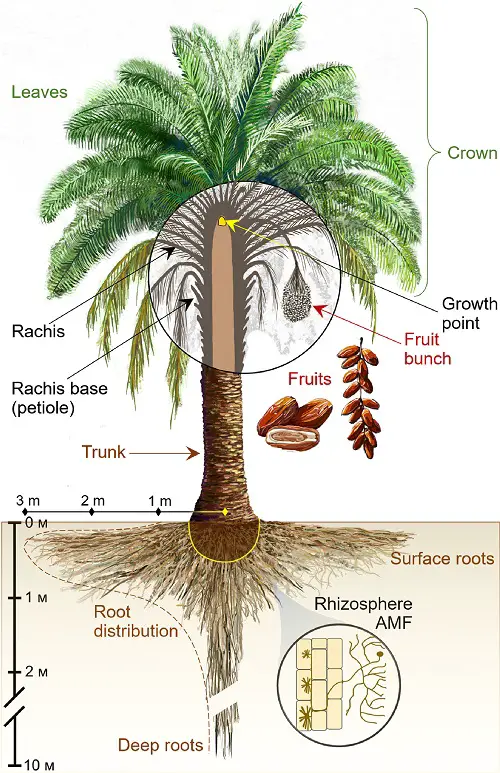The Palmetto Tree Root System is not the same as the other plants. Let’s have a detailed look at how it grows and uses them.
The Palmetto tree, a staple of Southern landscapes and Florida coastlines, isn’t just a symbol of warm, tropical paradises—it’s also a marvel of natural engineering below the ground.
Palmetto Trees
The Palmetto tree, specifically the Sabal palmetto, is a native species commonly found in the southeastern United States. These trees are highly adaptable and tolerate a wide range of soil conditions.
Understanding the root system of Palmetto trees is essential for optimal planting, care, and maintenance.
Types of Palmetto Trees and Their Root Systems

1. Sabal Palmetto
- Root System: Fibrous, shallow roots
- Soil Preference: Tolerant of a variety of soils, including sandy and loamy
- Water Requirement: Moderate
2. Saw Palmetto
- Root System: Rhizomatous, forms underground stems
- Soil Preference: Prefers well-drained sandy soils
- Water Requirement: Low to moderate
3. Dwarf Palmetto
- Root System: Fibrous, shallow roots similar to Sabal palmetto
- Soil Preference: Well-drained soil, sometimes clayey
- Water Requirement: Moderate to high
Learn about Oak Tree Leaves Identification, Benefits, and Uses
Key Characteristics of Palmetto Tree Root System
1. Shallow Depth
The roots of Palmetto trees tend to be relatively shallow, rarely extending deeper than 2-3 feet.
2. Adaptability
These trees are adaptable to various soil types, although they prefer well-drained, sandy soils.
3. Drought Tolerance
The root system enables Palmetto trees to withstand periods of drought, thanks to their ability to absorb water efficiently.
Depth of Palmetto Tree Roots

Palmetto trees, generally, have a shallow root system. The roots of these trees seldom penetrate deeper than 2-3 feet into the ground.
While the roots are shallow in depth, they tend to spread out horizontally. This allows the Palmetto tree to absorb water and nutrients from the soil efficiently.
Growth of Palmetto Tree Roots
1. Fibrous
The tree has fibrous roots that are shallow – rarely extending deeper than 2-3 feet below the surface of the soil.
2. Horizontal Spread
Palmetto tree roots spread out horizontally so they’re spread wider but not too deep into the soil, which is great for nutrient absorption and drought resistance.
Can Palmetto Tree Roots Cause Any Damage
There are always concerns about tree roots damaging infrastructure such as sidewalks, driveways, and foundations. But the risk is a lot different when it comes to Palmetto trees.
- As we just shared, the roots of the tree are shallow and spread out, which rules them out from growing under deep structures like foundations.
- These roots are fibrous and not aggressive or invasive as woody taproot systems so they cannot cause significant damage to strong surfaces – like cement.




